- Destinations
- Travel Styles
- About Us
- Contacts
- Destinations
- Travel Styles
- About Us
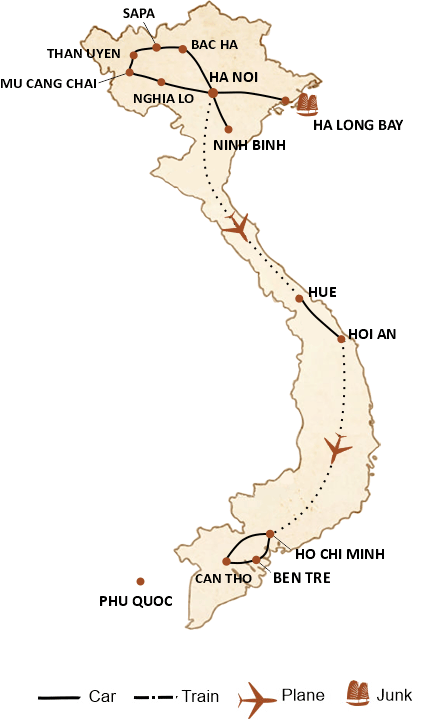
Upon landing in Hanoi, the ancient capital steeped in a thousand years of beguiling history, our English-speaking guide from Kampá Tour will give you a warm welcome at the airport, ensure your smooth transfer to a centrally located hotel, tailoring your day's exploration based on your arrival time. Then, you will unravel the tales of this historic city by visiting its iconic landmarks:
Ly Thai To is the founder of the Ly dynasty (1009-1225). It was he who transferred the capital from Hoa Lu to Hanoi in 1010
This Old Quarter is located in the heart of Hanoi and is full of old houses, temples, bustling markets, artisan shops, and traditional restaurants. It is an emblematic place that testifies to the history and culture of the Vietnamese capital.
Following this enriching exploration, savor some free time for personal relaxation.
This begins your unforgettable Vietnam 3 weeks from north to south with Kampá Tour.
A day dedicated to exploring Hanoi's most remarkable cultural sites and historical monuments:
Built 1000 years ago, this Confucian temple served as an institution where royal offspring and sons of mandarins received their education. It also hosted competitions for the country's most talented students, with the winners attaining the status of scholars and senior officials in Vietnamese feudal dynasties.
Colorful wooden puppets are skillfully manipulated by the artists using rods and bamboo shafts underwater. It is a unique and captivating art form unique to the Northern Vietnamese tradition.
Night in Hanoi.
En route to the high mountains in the far north of the country, a large border region with Laos and China, we will make stops along the way. First, we'll visit Suoi Giang, the land of green tea plantations with its large tea trees that are hundreds of years old. It's possible to arrange a visit to a tea farm and enjoy a tea tasting session.
Upon arrival in Nghia Lo, a small town located in the heart of the expansive Muong Lo basin, we will settle in with a Thai family in Ban Deu village, which is populated by black and white Thai minorities. Our hosts will warmly welcome us, and after some rest, we'll embark on a bike ride around the village. During this time, we'll have the opportunity to meet the Thais and discover the differences between black and white Thais, including their clothing, habits, and customs.
According to ethnologists, the Nghia Lo region is considered the cradle of the Thais and the place of origin of their migration to various regions within the country, as well as towards Thailand or Laos
This extensive valley is encircled by the Hoang Lien Son mountain ranges and ranks as the second largest rice field in the northern mountains
In the evening, enjoy dinner with the host family and spend the night in their traditional house on stilts.
Homestay accommodations typically consist of a single room within a traditional house, which may be constructed of wood or on stilts, among other styles. Mosquito nets, mattresses, and clean sheets are provided on-site for your comfort. The bathroom, equipped with hot water and towels, as well as shared toilets, are often located outside the main house.
After receiving warm greetings from our hosts, we'll head towards Mu Cang Chai, a place renowned for its magnificent rice terraces. This landscape, a true delight for discerning photographers, reaches its zenith from June to September when the hills, slopes, and fields are adorned with lush green and golden rice paddies. Our journey will include several planned stops:
Mu Cang Chai is nestled in a mountainous region at the base of the Hoang Lien Son range, which is an arm of the Himalayas in Southeast Asia. The area boasts a temperate climate and is famous for its pine forests, tea plantations, and, most notably, its breathtaking rice terraces. The region is predominantly inhabited by Thai and Hmong ethnic minorities, making it a captivating stopover between Nghia Lo and Sapa.
The Khau Pha Pass is recognized as one of the four most important and impressive passes in Vietnam. It is on this famous Khau Pha pass that the Khau Pha paragliding festival is held, an activity allowing you to fly over and contemplate from above the splendor of the rice terraces of Mu Cang Chai.
Small mountainous town nestled in the hollow of mountain ranges, on the road from Mu Cang Chai to Sapa. Than Uyen is mainly inhabited by Thai minorities who subsist on rice cultivation.
Continuation to Sapa via the Hoang Lien Son range, the last arm of the Himalayas in southeast Asia. Arrival in Sapa, walk to discover this old French resort:
Located at the end of the country on the famous Hoang Lien Son range, this region was a French resort during the colonial era thanks to its temperate climate. It is well known today for its fabulous landscapes typical of the high mountains of the North (zig zag paths winding along the backs of hills and mountains, rice terraces as far as the eye can see) and for its authentic culture (traditional villages and markets, minority ethnic groups). …).
Return to Sapa, night at the hotel.
Day of hiking in the middle of beautiful exotic landscapes along the Muong Hoa valley (Muong Hoa being a long valley located southwest of Sapa, at the foot of Mount Fanxipan – the highest mountain in Indochina) .
The route through ethnic villages spread throughout the valley: Y Linh Ho and Lao Chai of the black Hmong, Ta Van of the Dzay,…. Meeting local inhabitants at work in the rice fields, discovering their work and daily life.
Night in Sapa.
Exploration of a local weekly market near Bac Ha, where you'll encounter vibrant ethnic minority communities exchanging goods and news within their own communities.
In the afternoon, return to Hanoi by road.
Enjoy some free time for rest.
Spend the night at the hotel.
Departure for Ninh Binh – the land of limestone karsts, sugarloaf mountains, and rice fields flooded by rivers and lakes throughout the year.
Arrival in Ninh Xuan, visit to Mua Mountain. Climb a 486-step white stone staircase to the summit of this bell-shaped mountain, which offers a panoramic view of the Tam Coc region.
A limestone mountain located near the rivers and sugarloaf mountains of Tam Coc. In the past, it was renowned for its dance performances for the kings of the Tran Dynasty (13th-14th century).
Afterward, transfer to Tam Coc for a bike ride and leisurely exploration of this fabulous region.
Explore a vast landscape featuring sugarloaf-shaped rock formations, rice paddies, and rivers. Enjoy boat rides on the Ngo Dong River, winding through the sugarloaf peaks, allowing you to fully immerse yourself in the lush surrounding nature.
In the afternoon, enjoy a boat excursion on the Ngo Dong River to explore Tam Coc. This meandering river winds through rice paddies, sugarloaf formations, and passes under the three caves at the base of the limestone peaks.
Overnight stay in Ninh Binh.
Departure for Halong Bay, Vietnam's most beautiful bay and one of the most enchanting landscapes in Asia.
Upon arrival, board a traditional junk boat. You will be welcomed by the crew, and then the cruise begins in this stunning bay. Visit Bai Tu Long Bay, which is the northern part of Halong Bay.
We offer shared junks, which are often small in size with 10 to 12 cabins, accommodating around twenty people on board. You also have the option to choose a private cruise on a smaller junk with one or a few cabins for unforgettable experiences. Please contact us for this option.
Wake up at dawn to experience a moment of unparalleled beauty: the first rays of sunlight emerging from the thousands of limestone karsts in the bay, followed by a Tai Chi session on the terrace.
Continue the cruise to explore lesser-known parts of Halong Bay. Visit the magnificent caves of Halong Bay, including Thien Canh Son Cave, which houses stalagmites and stalactites dating back thousands of years.
Enjoy lunch on the junk, then disembark and return to Hanoi.
In the evening, catch an evening flight to Hue, the ancient imperial city in the central part of the country.
Spend the night in Hue.
Departure for a city tour of Hue (Hue being the last imperial capital of Vietnam from 1802 to 1945):
Spend the night at the hotel.
Day excursion to discover the villages and pagodas around Hue.
Board a boat for a stroll upstream of the peaceful Perfume River. Stop at the Thien Mu Pagoda located on a green fir hill, then at the village of Thuy Bieu, which specializes in planting grapefruits known for their quality. Bike ride around the Thuy Bieu village, on paths shaded by thousands of grapefruit and fruit trees... the opportunity to immerse yourself in serene and green nature. Installation with a peasant family, meeting with the hosts. Participation in the preparation of lunch, tasting dishes cooked by yourself.
Originating in the Truong Son mountain range (a long mountain range running along the border between Laos and Vietnam), this river peacefully flows through the city of Hue. The tombs of kings, pagodas, and temples located on its banks make this river the symbol and soul of the ancient imperial capital of Hue.
In the afternoon, transfer by car to the Sinh village, which is known for making prints... Walk around the village, stop at Mr. Phuoc, the artist with 60 years of experience, discovery of the stages of making prints, then introduction to traditional techniques.
Continuation of the visit with the village of Thanh Tien, which specializes in the manufacture of paper flowers. This 400-year-old profession has been passed down from generation to generation until today. Here, all kinds of flowers (lotus, rose, tuberose, sunflower, etc.) are reproduced in paper, bamboo, and other local materials. It's really hard to tell the real thing from the fake. Visit a factory to understand the work of very skilled craftsmen.
Return to Hue, the rest of the day is free for rest.
Night at the hotel.
Road to Hoi An, a quaint old town located 150 kilometers south of Hue, off the beaten path along the wild coastal shore of the Eastern Sea and the Cloud Pass road. Several visits and stops are planned along the way:
An important pass located between Hue and Da Nang, which serves as a significant climatic barrier between the north and the south of the country. From the top of the pass, you can admire the magnificent bays of Lang Co and Da Nang that stretch as far as the eye can see.
You'll also get to view beautiful bays with turquoise waters in Lang Co and Da Nang, long beaches that are still relatively untouched by tourists and preserved: Thuan An and Lang Co; along with extensive lagoons housing various types of fish farms belonging to the local population.
The Cloud Pass is the highest pass in the central region.
You'll encounter picturesque roadside cemeteries, often referred to as 'ghost towns.' These cemeteries contain sets of tombs - resembling castles - crafted in various finely detailed Asian architectural styles. This presents an opportunity to discover the unique 'Double Burial' custom among the Vietnamese.
Upon arrival in Hoi An in the afternoon, you will check in and spend the night at the hotel.
Walking tour in the Old Quarter to explore the must-see attractions of Hoi An, renowned as "Vietnam's most enchanting city":
Enjoy a scenic bike ride into the Hoi An countryside, where you'll encounter picturesque rice fields, quaint hamlets, shrimp farms, and lush vegetable gardens. Along the route, make a stop at Cam Chau village, where you'll have the opportunity to visit a lantern factory and learn about the intricate lantern-making process, including bamboo basketry, dyeing, and paper crafting.
Return to Hoi An in the late afternoon, and spend the night at your hotel.
Enjoy a full day at your leisure for independent exploration of Hoi An's charming old town. You have various options:
Explore the historic Old Quarter, wander through its narrow streets, and discover its unique charm. You can also indulge in shopping for local products like lacquerware, handicrafts, and more.
Consider getting tailor-made clothing at one of the renowned silk shops in town. Hoi An is famous for its skilled tailors, and you can have custom garments created to your liking.
Embark on a delightful bike ride into the picturesque countryside surrounding Hoi An. Along the way, you'll encounter traditional villages specializing in various crafts such as vegetable farming, pottery, and carpentry.
Weather permitting, unwind on the exquisite Eastern Sea beaches, including Cua Dai and An Bang, renowned as Vietnam's most beautiful. Bask in the sun and embrace the refreshing sea breeze for a truly revitalizing experience.
After a day of exploration and relaxation, return to your hotel for the night.
After a flight to Ho Chi Minh City, the capital of the south (formerly Saigon), you'll begin your exploration of the city's center, often referred to as "colonial Saigon." Here are the details:
Ho Chi Minh City, formerly known as Saigon, is the largest city in the country, with a population of around 10 million. It serves as a gateway to various regions, including the Mekong Delta, the coastline, and the southern highlands.
As the sightseeing tour concludes, you will be dropped off at your hotel, giving you the freedom to explore the city at night.
Depart for the Mekong Delta, a unique region that combines both land and water, situated in the southernmost part of Vietnam.
The Mekong River, originating in the immense Himalayan range, traverses five upstream countries in Southeast Asia (China, Burma, Thailand, Cambodia, Laos) before finally flowing into the Pacific Ocean within Vietnamese territory. This river has sculpted a vast and fertile delta in the southern region of the country, famously known as the "Mekong Delta."
Upon arrival in Ben Tre, a significant town located in the heart of the northern branches of the river, embark on a boat journey along the waterways to reach Mo Cay, a less-visited rural area celebrated for its coconut trade and the production of various coconut-based products like coconuts, coconut threads, and activated coconut charcoal.
You'll have the option of a bike ride or a ride on a Xe loi (motorized cycle) through the lush green island, densely adorned with coconut plantations. This route, away from the hustle and bustle of mass tourism, leads you along narrow paths beneath the shade of coconut trees, creating a particularly picturesque landscape. Make stops at local farms to observe the production of sweets and coconut brooms.
Continue your adventure with a journey in a small rowing boat, meandering through canals lined with water palm trees, providing you with a glimpse into the daily life of the delta's residents. Visit Mr. Van's traditional house and savor local specialties crafted by his wife, including coconut jam, honey tea, and pollen. You'll also have the opportunity to engage with the warm-hearted local population, fostering memorable encounters.
In the afternoon, drive to Giong Trom, passing through coconut plantations and numerous canals that connect to the mighty Mekong River.
Settle into a charming lodge situated on the banks of the Ham Luong River, where you'll have some free time to relax in a serene environment and enjoy the possibility of watching the sunset.
Spend the night at the lodge.
Embark on a bike ride through the heart of coconut country, traversing small shaded paths en route to the island of Oc. This leisurely excursion will immerse you in the daily lives of local residents, providing insights into their craft activities. You'll have the opportunity to visit a small local market and a coconut shelling factory along the way.
In the afternoon, set out on a drive to Tra Vinh, crossing the mighty Mekong's expansive arms, including the Ham Luong and Co Chien rivers. This route treats you to breathtaking vistas of the delta, featuring lush greenery and rural landscapes.
Upon arrival in Tra Vinh, a picturesque town situated downstream of the Mekong, resembling a peninsula, you'll explore the Khmer cultural museum and the Âng Pagoda (also known as Angkor Ajaborey Pagoda). This ancient pagoda, showcasing Khmer architecture, is surrounded by centuries-old trees. Originally built in the 10th century and later restored in 1842, it stands as the oldest pagoda in Trà Vinh, boasting a unique architectural style that harmoniously blends typical Khmer decorations from Vietnam and those of Angkor in Cambodia.
As the afternoon draws to a close, continue your journey to Can Tho, the capital of the delta, located on the right bank of the southern arm of the Mekong.
Spend the night at your hotel.
Rise early and embark on a boat journey along the Mekong. Your destination is the vibrant Cai Rang floating market, a captivating and colorful spectacle where a multitude of boats are laden with fruits, vegetables, and various goods for their lively commercial exchanges. This unique "river trade" offers a glimpse into the distinctive way of life of the Mekong region's inhabitants.
After exploring the Cai Rang floating market, disembark for a visit to the An Binh land market, located just opposite Cai Rang. This visit provides an intriguing opportunity to draw comparisons between the bustling floating market and the more traditional land-based market.
In the afternoon, return to Ho Chi Minh City.
Spend the night at your hotel.
Enjoy a completely free day to rest and make any final purchases or arrangements as needed.
In the evening, you'll be transferred to the airport for your departure flight.
This marks the end of our Vietnam 3-week from north to south with Kampá Tour! We hope you've had a memorable and enriching experience exploring this beautiful country. Safe travels on your journey home!
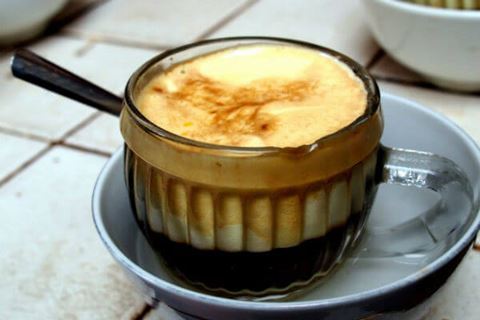
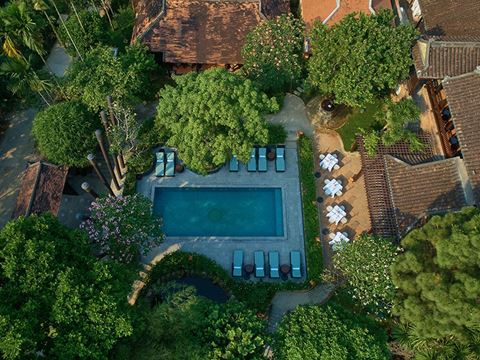
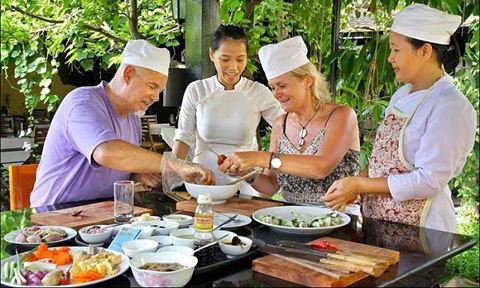
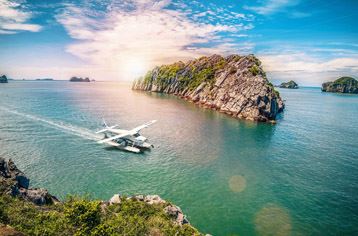
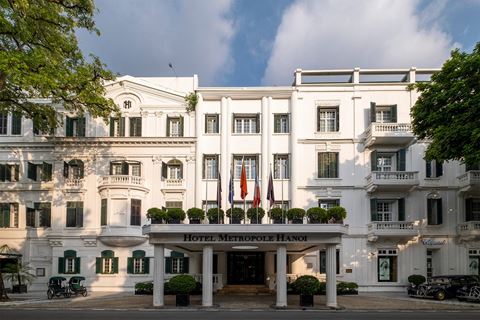
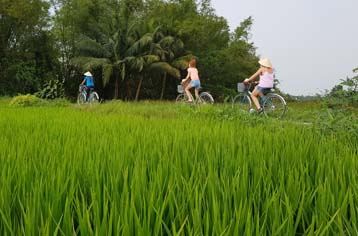
A 3-week journey in Vietnam offers several benefits:
At Kampá Tour, we recommend the following times for hiking in Vietnam based on our extensive experience:
These recommendations ensure you have a pleasant and enjoyable hiking experience across Vietnam.
Hiking Ta Xua Peak in Son La without a guide is not recommended due to its challenging and wild terrain. It is easy to get lost in the jungle.
Some of the best hiking spots in Vietnam, especially in the North and Northwest, include Ky Quan San in Lao Cai, Pha Luong in Son La, Lao Than in Lao Cai, Ta Xua Peak in Son La, and Lung Cung in Yen Bai. These places offer stunning landscapes and challenging trails. It is highly recommended to hire a private guide (porter) from companies like Kampá Tour, which provides experienced English-speaking guides. The terrain in these areas is very wild and unknown, and navigating without a guide can be difficult and dangerous due to the risk of getting lost in the jungle.
As an approximate guideline, the cost of a 2-week trip to Vietnam would be around 1450$ per person when traveling as a pair (excluding airfare). For a 3 or 4-week journey, please budget between 1900$ and 2500$ per person. If you're in a larger group (4 or 6 people), the trip will be more cost-effective. The price always varies depending on the duration and time of your stay, as well as your preferences (activities, services). Please leave us a quote request, and our travel advisor will provide you with more detailed information and a quote.
Yes, 3 weeks is enough to explore this beautiful country in-depth. This duration allows you to experience a wide range of the country’s diverse regions, from the bustling cities and historical sites to the serene countryside and stunning coastal areas. You can travel from north to south, covering major attractions and hidden gems alike.
Customized travel is a service where your journey is designed according to your preferences for dates, duration of stay, services, and budget. A local advisor assists you in preparing for the trip and supports you on-site, handling transportation, visits, accommodation, and more. This ensures you benefit from an organized trip tailored to your desires and constraints down to the smallest details.
If you agree with the itinerary proposed by one of our advisors, please send us an email to confirm the reservation of the tour with our agency. Your advisor will then provide you with the booking documents, including:
A reservation form containing detailed information about your booked tour, as well as your personal details and contact information to be completed. You will need to return the form with these details duly filled out, which will be used for the organization of your trip. Please also send us a scan of your passports.
A travel invoice requesting a deposit payment of 25% of the total price.
The organization of your trip will be confirmed upon receipt of the completed form and once the deposit is in our possession. We will also send you a travel contract that certifies the details of your trip, including the duration, travel dates, deposit paid, and your contact information."
The price displayed on our website does not include international flights and is calculated based on 4 people with standard hotels. Our tours are private with custom services, so the price varies depending on the travel period, the selected service category, and especially the number of travelers. Please contact us for a detailed quote for your trip.
Vietnam experiences a diverse climate from north to south, owing to its varied topography and the country's considerable length (2000 km from north to south). When one region is humid, cold, or rainy, the other can be pleasantly sunny in contrast. Based on our experience, the optimal time to visit Vietnam is from October to April.
Within this timeframe, the best months are October to November and March to May. During these periods, the weather remains pleasant, and, additionally, they are the least rainy months of the year in Vietnam. While July and August can be a bit hot (30-35 degrees Celsius), Halong Bay typically enjoys sunny weather. You'll also have the opportunity to witness the region adorned with endless terraced green or yellow rice fields.
Regarding the southern region, despite it being the rainy season, precipitation usually lasts for only an hour or two each day, with the rest of the day being sunny. If you already have a specific timeframe in mind for your trip (winter, summer, etc.), please inform us, and we can provide guidance on the most favorable months.
If you are from the UK, France, Germany, Spain, Italy, Switzerland, Poland, the Czech Republic, Russia, Japan, South Korea, Norway, Sweden, Finland, Denmark, or Belarus, you do not need a visa for Vietnam for stays up to 45 days. Switzerland, Poland, and the Czech Republic have a special exemption from March 1 to December 31, 2025, for organized tours.
Australia, New Zealand, Canada, and the United States are NOT visa-exempt and must obtain a visa before arrival. You have three options:
For the smoothest process, we highly recommend the E-Visa. Ensure your passport is valid for at least 6 months and have proof of onward travel. Contact us for visa assistance.
Yes, it is entirely possible to make changes to the provided itinerary. We specialize in private and tailor-made trips, and our advisors will be able to adjust the program according to your every wish.
International cards such as Visa or Mastercard are widely accepted in hotels, shops, and restaurants. However, please note that Vietnamese banks may apply an additional commission of 3% to 4% for this type of payment.
You can also pay in euros or USD at some businesses in major cities (hotels, restaurants, etc.). However, for small expenses, it is more advantageous to have Vietnamese Dong (VND). You can easily exchange currency at banks, jewelry shops, or even at your hotel. You can also withdraw VND from ATMs.
As for the balance payment, you can settle it in one of the following ways:
In cash upon your arrival. We accept US dollars and Euros (USD/EUR exchange rate calculated on the day of payment). However, we do not accept defaced or excessively old banknotes. We kindly ask you to obtain new bills from your bank to avoid any inconveniences during your trip.
By credit card upon your arrival at our office (using our credit card terminal). In this case, there is an additional fee of 3% for our bank if you pay with Visa or Mastercard and 4% for payments with Amex. Payment is made in the local currency.
By bank transfer: We request that you complete this transfer no later than 10 days before your departure. This is to ensure that the balance of your trip is credited to our account before the start of your journey
To make the deposit payment, you have two options:
If you are traveling with young children, we always try to arrange either family rooms or connecting rooms or rooms next to each other. However, not all hotels in our country have family rooms, and these rooms are usually in high demand in July and August, the peak vacation period for families. Therefore, we recommend booking your trip early to ensure the availability of the services according to your preferences.
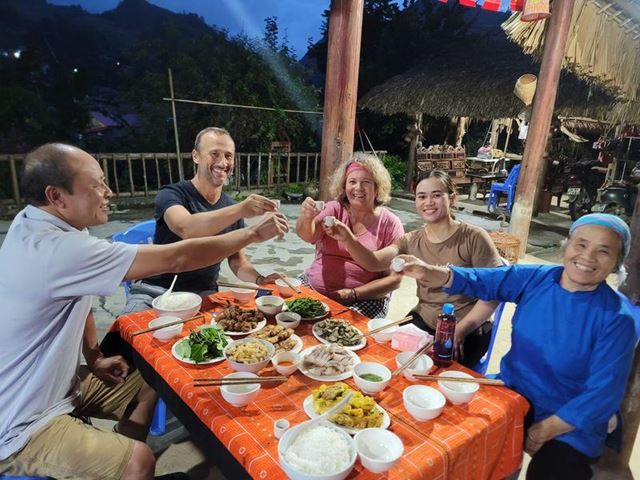
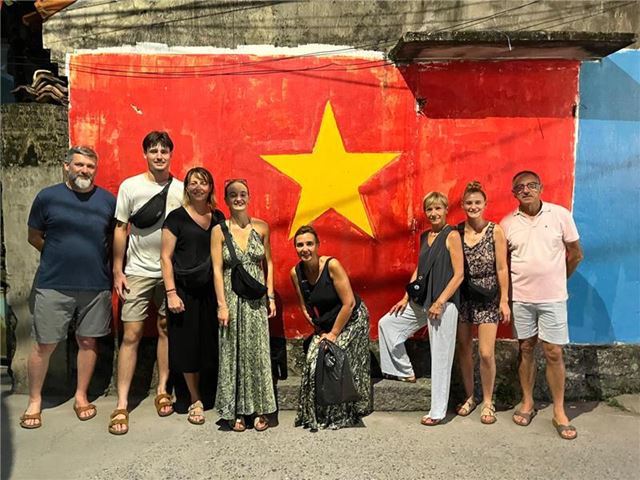
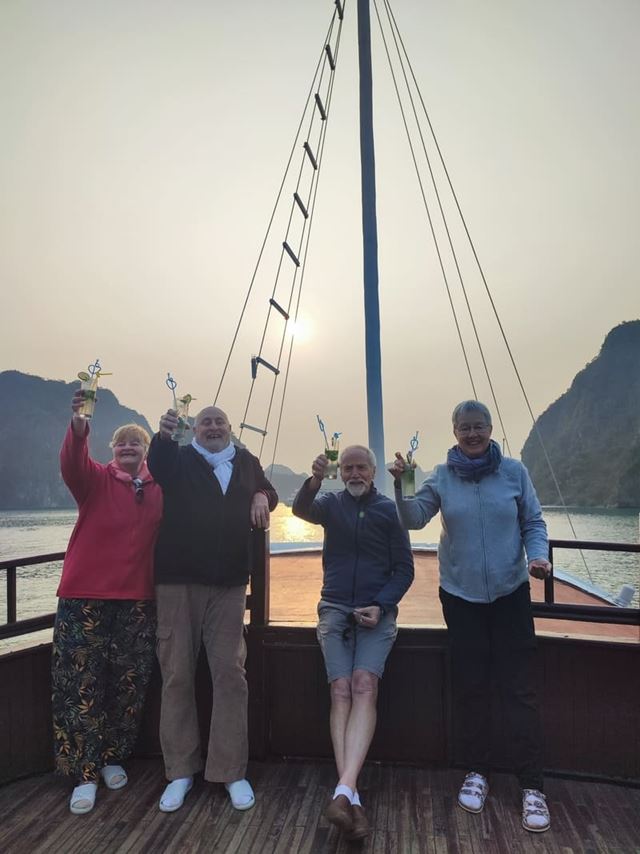
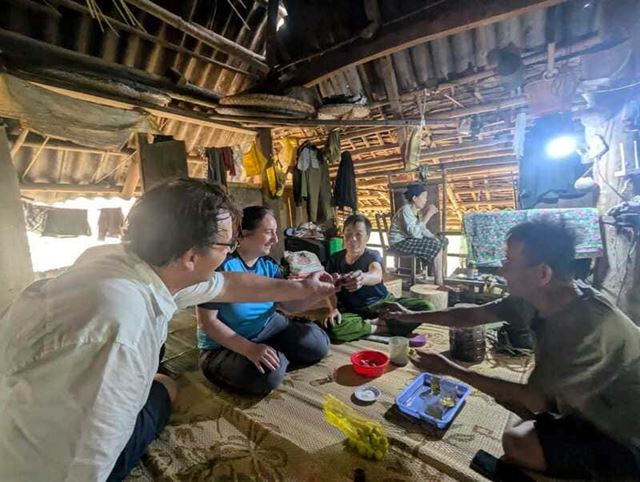
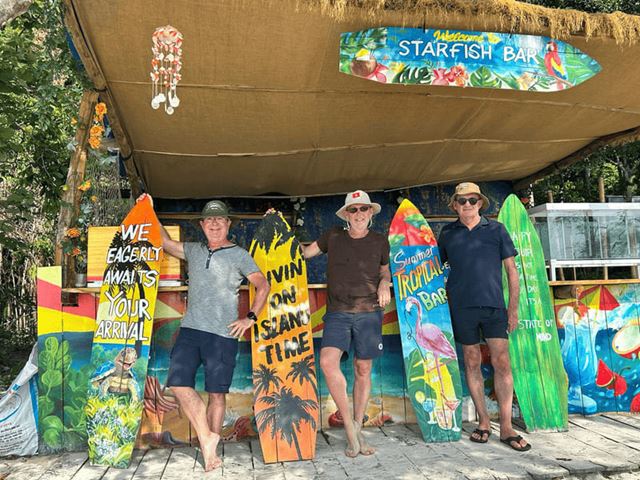
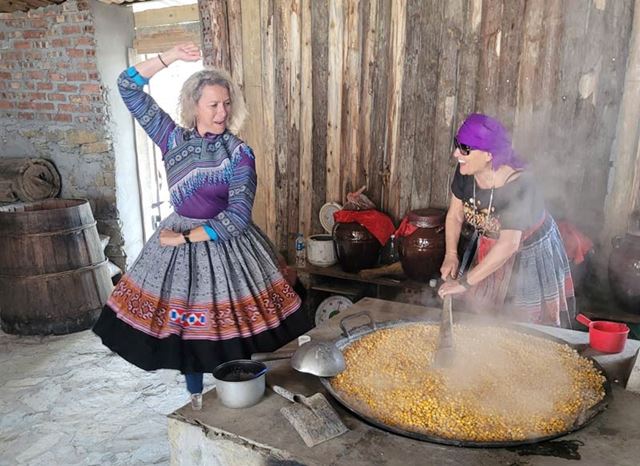
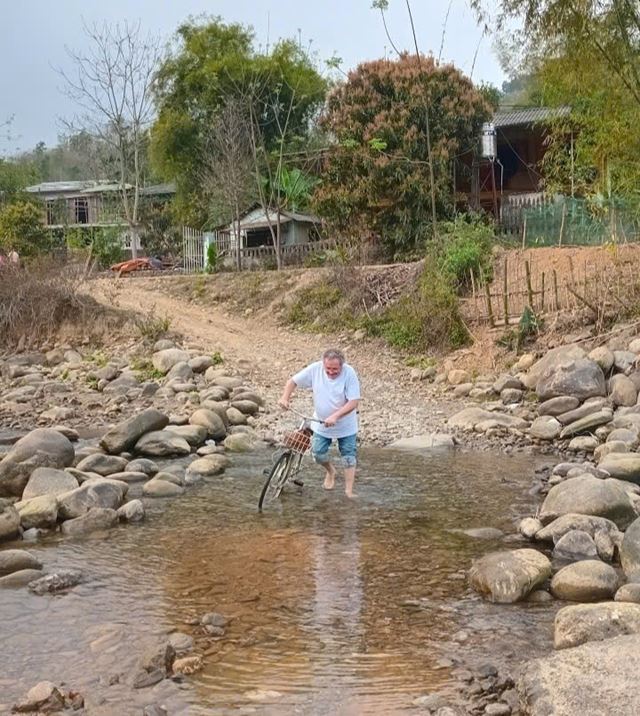
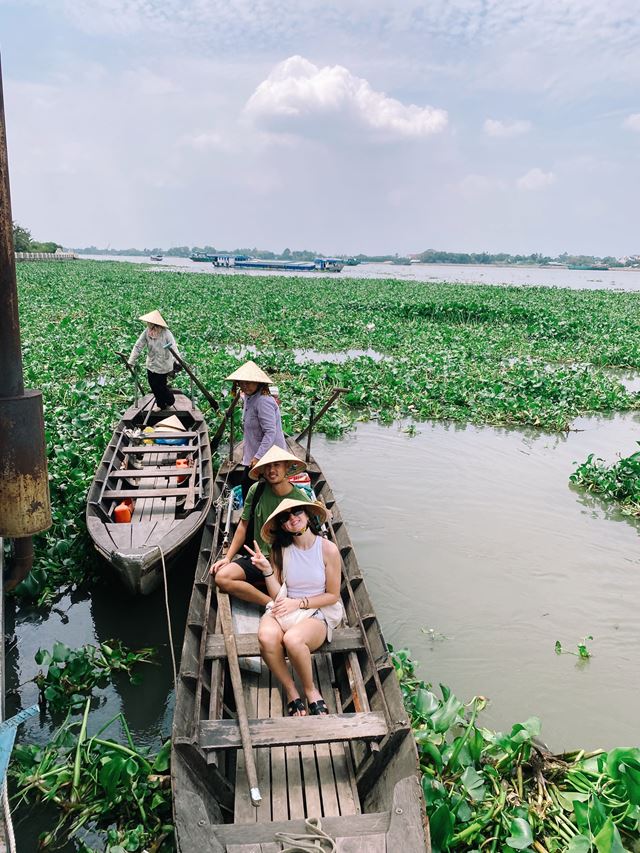
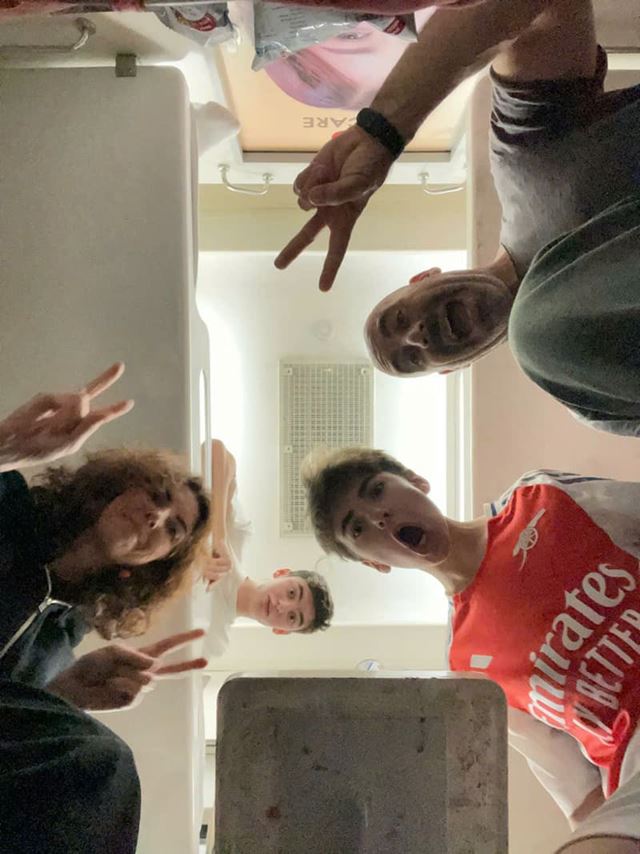
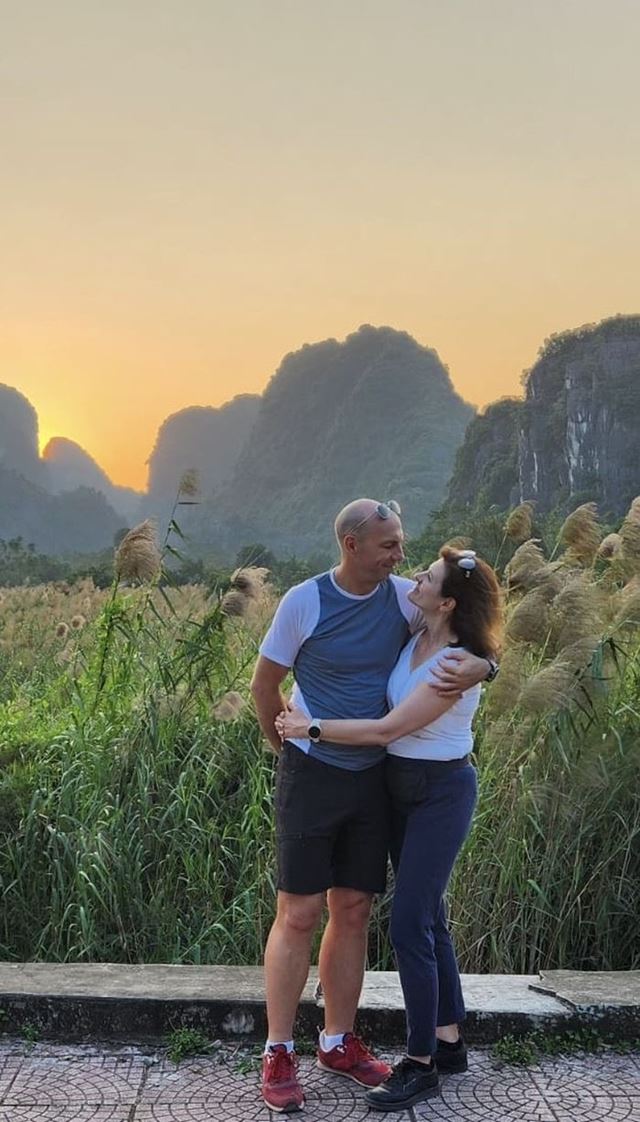
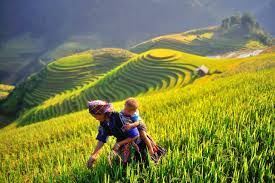 The Essentials
The Essentials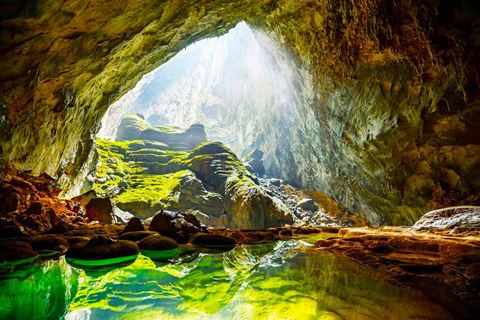 The must-sees in Vietnam
The must-sees in Vietnam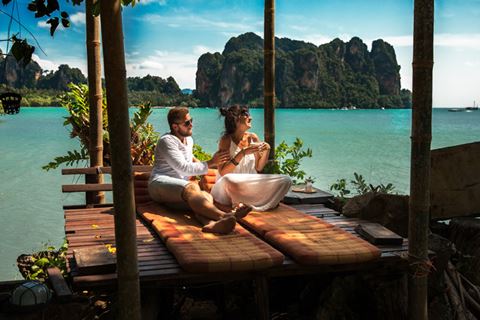 Couples & Relaxation
Couples & Relaxation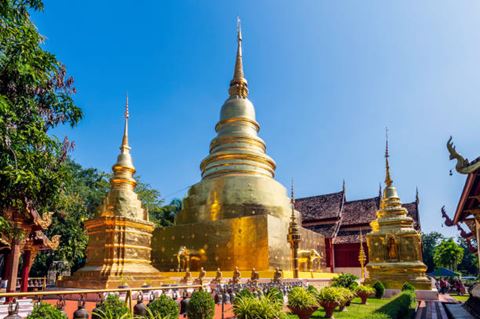 The must-sees in Thailand
The must-sees in Thailand
Comments
No comments yet - be the first to comment!